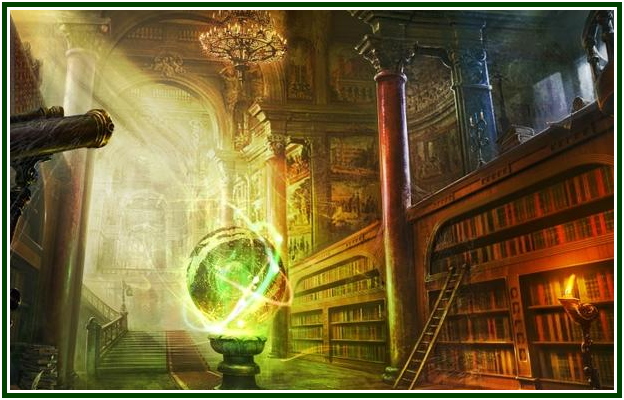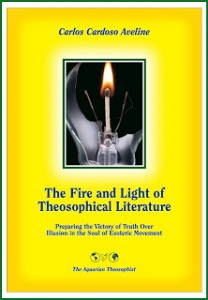
Esoteric Philosophy Invites Us to Learn
the Lessons Hidden in Accumulated Karma
Carlos Cardoso Aveline

History contains the keys to building a better future
Many think one should forget about the history of the theosophical movement altogether. As one discovers Theosophy, they say, one has more than a lifetime task in understanding and living up to the wisdom taught in works like “Isis Unveiled”, “The Secret Doctrine”, and others. Not to mention hundreds of classical and modern thinkers like Plato and Fromm, Kabir and Gibran, Confucius, Lao-tzu and Paracelsus.
Why should one then also have to study the history of the theosophical movement, with its few, poor victories and many sad failures? Would it not be a diversion and a loss of time?
Not at all.
Serving mankind and playing an active role in the planetary evolution is an essential part of Occult learning. The theosophical project constitutes the main instrument through which Theosophists can do that. One needs to know its history, in order to strengthen it as a practical tool to help mankind grow in discernment. The movement is also a refuge for one’s soul: it must be observed and understood as such.
The Community of Learners
The Eastern idea of “three jewels” or “three refuges” (Triratna in Sanskrit) is thoroughly valid in Theosophy.
Since Life is highly probationary, students need some sort of refuge. The Law of Impermanence applies to every transitory aspect of life, and that includes one’s own lower self. Therefore the truth-seeker must search for refuge from transient things – gross and subtle – in That which is permanent. Learning to do so is a long-term process which coincides with the unfolding of “lay discipleship”.
The soul of the learner will then say, in these or other words:
1) I take refuge in the Teachers of Divine Wisdom (or Buddhas);
2) I take refuge in the Teaching and the Law (or Dharma); and
3) I take refuge in the mutual-help process of co-discipleship (or Sangha).
These are the refuges.
The theosophical sangha is really located not in any physical place but in some subtle patterns or “way of life”.
In order for the student to take refuge in such inner sangha, he needs to understand the history or accumulated karma of the movement in the world. He has to see in what levels of consciousness it really exists, and understand its present and future opportunities at various aspects of reality.
Theosophy teaches that it is a loss of energy to try and make a separate search for truth. Individual independence has to be compensated by mutual help and solidarity. As a result, it is not correct to wash our hands Pilate-like with regard to the destiny of the theosophical movement.
It is by the second refuge, in the teaching, and the third refuge, in the sangha, that we can be better able to take the first refuge, in the inner guidance or the teacher.
The three elements are interdependent. One must know what is and what is not the real teaching, so that one can know what is, and what is not, the real sangha – and how to find the true guidance or inner Master.
History as a Science
History is the science or study of accumulated experience, and experience is the same as Karma.
In the first paragraph of the famous Letter 10, in “Mahatma Letters”, an Adept-Teacher defines Occult Science as the study of the causes by their consequences, and of the consequences by their causes. History itself can be well defined in exactly the same words as these.
The study of History is therefore but the study of the Karmic Law as it works along time. On the other hand, historical knowledge also helps people to prepare a better future. Knowing one’s past trajectory enables one to perceive one’s highest dharma, both individually and collectively as a movement.
There is nothing entirely new, or entirely old, under the Sun. Everything that was, will be, says Ecclesiastes: 1.
In order to know more about the future, one must study the past and present circumstances from the viewpoint of our higher potentialities – individual and collective.
Our future is far from being an “empty page”. If one studies the law of the cycles, one sees that the past history or accumulated experience contains the seeds of every future progress. It also contains the seeds of future mistakes, which one must try to avoid from now. Past, present and future are but one continuous, living process in the eyes of the Occultist. As a result of this, we must grow beyond the shallow attitude of those who simply deny past events.
Discerning Right and Wrong
As one studies History, one finds a long series of illusions and disillusionments, of search for truth and collective deceptions.
History allows us to understand the multidimensional process of probation and test through which the movement has grown since its inception in September 1875. The movement is a magnetic field. Its substance is the process of collective learning and effort. It evolves in a constant struggle against collective and individual self-delusion.
History contains the keys to building a better future.
There are of course conflicting viewpoints as to the evolution of the movement. No one is the sole proprietor of truth, and the original theosophy never recommended to abandon truth in order to avoid discussion. Honest debate helps one to learn. This is clear. One should not argue for the sake of argument, or out of personality motives. In Occultism, everything depends on the altruism and generosity of intentions. H.P. Blavatsky described thus the right attitude of a whole-hearted theosophist:
“Ready to lay down our life any day for THEOSOPHY – that great cause of the Universal Brotherhood for which we live and breathe – and willing to shield, if need be, every theosophist with our own body, we yet denounce as openly and as virulently the distortion of the original lines upon which the Theosophical Society was primarily built, and the gradual loosening and the undermining of the original system by the sophistry of many of its highest officers.” [1]
Politics is often a plague.
People who sacrifice sincerity or actual facts for the sake of “political correctness” are renouncing Theosophy and abandoning the search for truth. They reject the real teaching so that they can better possess its outer and empty shell. Naïve souls follow the opposite of the lesson given in Matthew 13: 24-30, as they carefully burn the wheat and put the weeds in their barn, because this is the easy thing to do.
Self-responsible individuals recognize that “difficulties” are teachers. Life kindly puts obstacles before us, lest we forget to learn the sacred lessons hidden in them.
We all have much to learn from our accumulated experience and mistakes. One example is this, that in order to have the moral authority to perform the task of criticizing dogmatic religions, we must do our own homework first. This previous condition can’t be left aside, and HPB wrote:
“We bear our Karma for our lack of humility during the early days of the Theosophical Society; for our favourite aphorism: ‘See, how these Christians love each other’ has now to be paraphrased daily and almost hourly, into: ‘Behold, how our Theosophists love each other.’ And we tremble at the thought that, unless many of our ways and customs, in the Theosophical Society at large, are amended or done away with, [we] will one day have to expose many a blot on our own scutcheon – e.g., worship of Self, uncharitableness, and sacrificing to one’s personal vanity the welfare of other Theosophists – more ‘fiercely’ than it has ever denounced the various shams and abuses of power in state Churches and Modern Society.” [2]
The Original Project
There is plenty of evidence that the original programme of the movement included the honest study and frank discussion of its own work, its own mistakes, and the lessons it must learn decade after decade, century after century.
H.P.B. was entirely devoted to the building of the theosophical movement, and this meant (and still means) a lot of organizational work.
Her letters to A.P. Sinnett and her many articles on the movement deserve study. The theosophical effort is also intensely discussed in the book “The Key to Theosophy”. By her actions and life-example, H.P.B. teaches the direct interdependence of the three elements of the Triratna which we have seen before.
Throughout the “Mahatma Letters to A.P. Sinnett”, one finds a frank discussion of the most difficult challenges before the theosophical movement.
As long as she lived, H.P.B. had before her mind a broad view of the past and future of the movement, of the planet, and of humanity. Every student of theosophy is invited to share the same standpoint.
There is no reason for theosophists of any century to think they will be effective unless they have a notion of the process by which a visible nucleus of Brotherhood is being built since 1875.
The history of the movement is the story of the conflicting relationship between the Eye Doctrine and the Heart Doctrine within the theosophical “sangha”. This is no short term action. It is part of the preparation for the sixth sub-race of the fifth race. The seed was planted in the 1875-1891 period. In the twentieth century, it had to start germinating by its own merits. In the present century, as in the following ones, renewed efforts are needed.
The real movement has, as H.P.B. wrote of each individual student, to “continually burst through its confining shell or encasement, and such a disruption must also be accompanied by pain, not physical but mental and intellectual”. [3]
The theosophical seedlings must make the heart doctrine burst through the eye-doctrine or pseudo-theosophical shell, in order to come out into fresh air and establish a direct contact with the inspiring energy sent by the Sun.
The inner vitality of the movement at any given time is directly linked to the amount and accuracy of its historical consciousness, and to the clarity of the knowledge about its purpose.
NOTES:
[1] “Is Denunciation a Duty?”, in “Theosophical Articles”, H. P. Blavatsky, Theosophy Company, Los Angeles, 1981, volume I, p. 201.
[2] “Is Denunciation a Duty?”, see same volume and page.
[3] “Spiritual Progress”, an article by H. P. Blavatsky, available in our associated websites. Also published in “Theosophical Articles”, H.P.B., Theosophy Co., vol. II.
000
An initial version of the above article was published at the February 2008 edition of “The Aquarian Theosophist”. It had no indication as to its author.
000
On the role of the esoteric movement in the ethical awakening of mankind during the 21st century, see the book “The Fire and Light of Theosophical Literature”, by Carlos Cardoso Aveline.

Published in 2013 by The Aquarian Theosophist, the volume has 255 pages and can be obtained through Amazon Books.
000